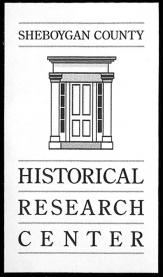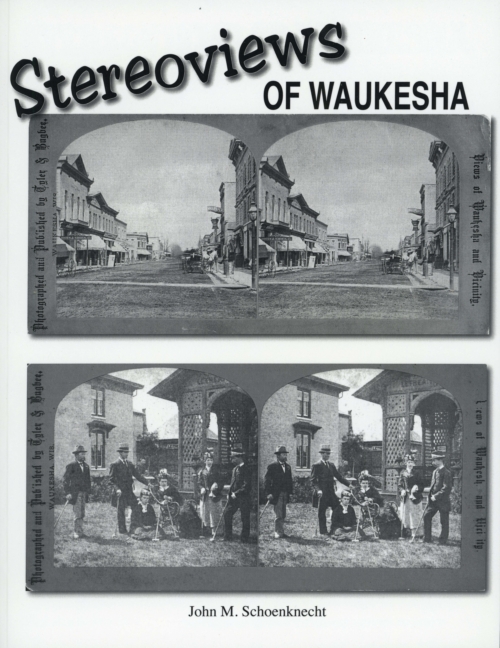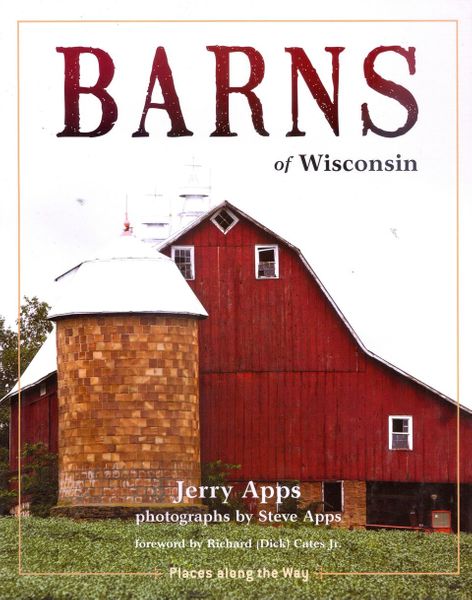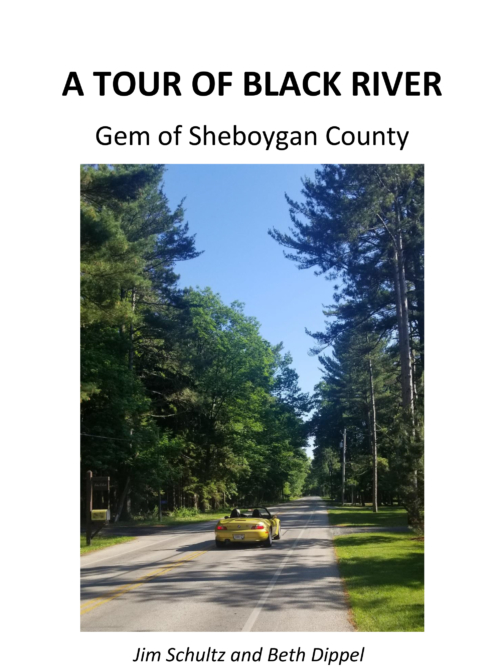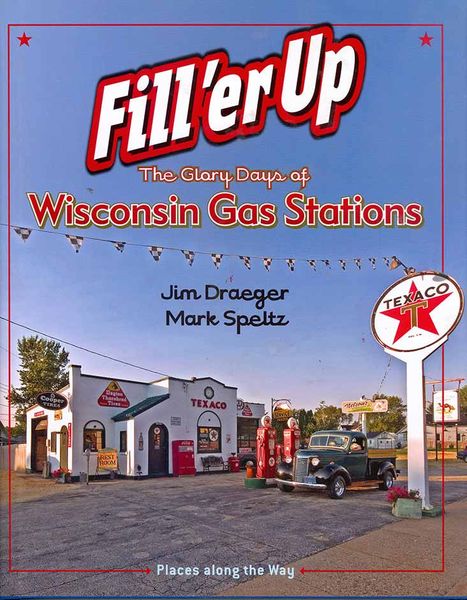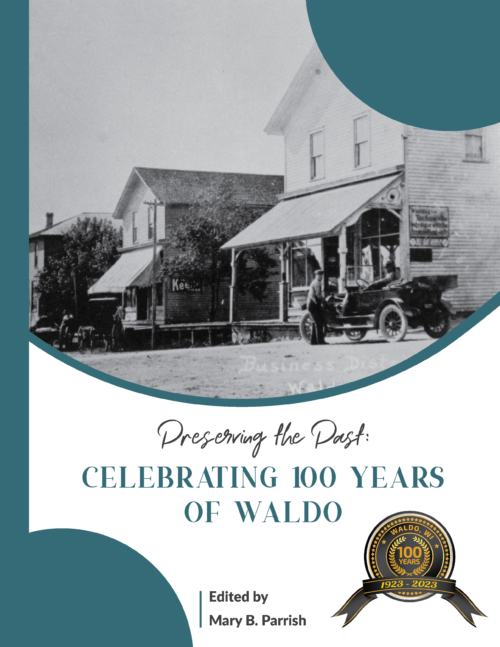-
By Jerry Apps The barns of Wisconsin are history books in red paint, sociology with gabled roofs, theology with lightning rods. In many ways barns are Wisconsin agriculture nailed together in buildings with cupolas on top. This revised edition was printed in 2010 and filled with beautiful images.
-
By Brian Leahy Doyle In Encore! The Renaissance of Wisconsin Opera Houses chronicles the histories of ten Wisconsin opera houses and theaters, from their construction to their heydays as live performance spaces and through the periods when many of these stages went dark. But what makes these stories so compelling is that all but one of the featured theaters has been restored to its original splendor.
-
By Rick Kroos This autobiography by Rick Kroos takes you from his childhood home in the city of Sheboygan to Vietnam to Hong Kong, where he has lived most of his adult life. It is a wonderful and inspirational story from beginning to end.
-
Sale!By Jim Draeger and Mark Speltz The authors visit 60 Wisconsin gas stations that are still standing today and chronicles the history of these humble yet ubiquitous buildings. The book tells the larger story of the gas station's place in automobile culture and its evolution in tandem with American history, as well as the stories of the individuals influenced by the gas stations in their lives.
-
Originally platted as the village of Rochester, Sheboygan Falls took shape in the late 1830s and 1840s. Settled by Yankee entrepreneurs from the East, "Sheboygan at the Falls" was a strong settlement from the beginning, surviving even the financial panic of 1837. A city of Greek Revival and Cream City brick architecture, Sheboygan Falls boasts two districts listed on the National Historic Register
-
By Gustave Buchen
Considered the quintessential book on Sheboygan County history, this volume by Gustave Buchen, was written in 1944, when many of the original settlers were still alive. The information is well documented and tells the story of Sheboygan County's first years. The book includes an index, maps of early Sheboygan County and drawings. 2015 Reprint.
-
By Bill Wangemann Sheboygan deserves its reputation as a conservative city, quiet and law abiding. But here are some stories from the past that have been swept under the rug or lost overboard. Venture into the mists of the Lake Michigan Triangle that have swallowed boats, planes and entire tribes. Investigate speakeasy shootings, safes burgled by a flyswatter, poisoned Christmas candy and the hoax that had militiamen firing on their own cattle. Or just sit down with some bizarre anecdotes about a hometown you though you knew, from the town’s first baseball game to the man freed from jail by a jug of whiskey to the deputy sheriff who had to enforce Nicholas Hoffman’s first bath in fifty years.
-
By Plymouth Historical Society and SCHRC
Plymouth, originally considered a “hub” city because of the hub and wheel factory located there, it has also earned that moniker because of its central location between Milwaukee and Green Bay. Tourists flock to Plymouth year round to visit the variety of shops, to golf, swim and ski, or explore the beautiful Kettle Moraine State Forest. Residents are proud of their heritage, which can be seen at sites throughout the city. Visit Plymouth through this wonderful tribute using historic photographs.
-
“Cedar Grove, Wisconsin, 150 Years of Dutch-American Tradition,” has been updated and reprinted. Three new chapters entitled, “Historical Update, Old News and The Royal Visit” have been added. The new publication will be available for sale at a discounted price during the festival at the following locations: Holland Festival Souvenir Stand, Het Museum, Te Ronde House Museum, Oma’s on Main Restaurant, Cedar Grove Library and the Union Dollar General Store.
-
By Bernard Michaels
The poignant story of immigration and settlement of the Irish in Sheboygan County, this book gives an account of the Byron-Lima Settlement, a span of some thirty miles in which over 600 Irish families settled. The community's irregular borders ran from Kennedy's Corners in Lima to the frame church of Byron's St. John. The town of Mitchell, Sheboygan County is at the heart of this story.
-
By Elmer Koppelmann The village of Howards Grove began as two separate villages, Howards Grove and Millersville. Not until 1967 did the two unite into one incorporated village. The first European settlers to settle in the town of Herman (originally named Howard) were the "Lippers"- a group of 13 families and seven orphaned young people from Lippe-Detmold, Germany. The year was 1846, and the group's leader was Friedrich Reineking. They settled on the land that is now Lakeland College. This volume brings the history of the area back to life, and documents the families and businesses that, today, make up Howards Grove.
-
By Peter Laun
Elkhart Lake, Wisconsin, home to Road America today, was once a summer vacation retreat to thousands of city dwellers from Chicago, Milwaukee and St. Louis. The trains and interurban brought them to enjoy the cool breezes and waters of Elkhart Lake, Crystal Lake and Little Elkhart Lake. This volume discusses Joseph Moore, the founder and many other colorful characters of the village. It reminds us of Villa Gottfried, the Schwartz Hotel, Siebken's, Pine Point, Osthoff and Camp Brosius. Photos accompany each story.
-
The cheese industry has been very important to Sheboygan County, Wisconsin since the 1870s. This is a history of the industry in the county. It is divided by townships and lists some 210 different factories that existed over time. It deals with cheese making in the home, the development of cheese factories, factories and their locations, cheese makers, the cheese making season, tools and equipment, the growth of the industry, cheese exchanges, types of cheese and much more

